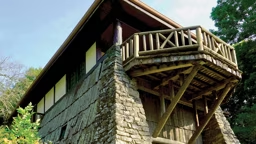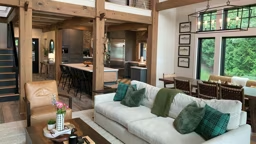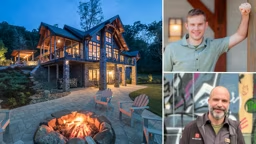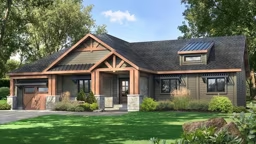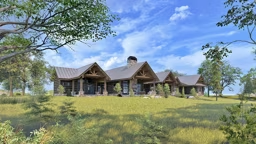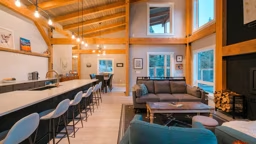
Photo: Roger Wade / See more of this small home, built for two, here.
Question:
How do I downsize into a timber home?
Answer:
There are a lot of good reasons to think small when planning a new timber home. Moving into a smaller home frees you from the cost and time commitment that comes with excess square footage. It’s less to keep clean, and allows you to enjoy a simpler life.
“A lot of our population today is what we call ‘move-down homeowners,’” says Jonathan Orpin, founder of New Energy Works, which has offices in both Farmington, New York, and Portland, Oregon. “These are people who want to simplify, but they still want quality. For this type of client, designing a small yet well-crafted and high-performing home can be a great approach.”
Though the “tiny house” concept is still out there, most people now realize that full-time living in less than 400 square feet isn’t sustainable. However, a 1,000-to-1,200-square-foot abode is not only livable, it’s enjoyable. It also allows for more design configurations and affords a level of privacy that a tiny house can’t.
Small house living is even more attractive in a timber frame home because the timber construction accommodates the open-concept interiors today’s buyers covet. Thanks to this fact, a timber home will feel much larger than it actually is.
When planning your own small-scale timber home, look to ranch-style designs that feature a central timber-framed core containing the great room/kitchen, with a wing to one side for the master suite and home office and another wing for guest rooms and baths. Though a single-level plan typically costs more in terms of excavation and foundation work, if you keep the footprint small, the price tag won’t be exorbitant. And be sure to opt for high-quality wall systems, like structural insulated panels; excellent roofing and insulation; and energy-efficient windows and doors. These are the items that will keep your home comfortable and affordable for the long haul.




